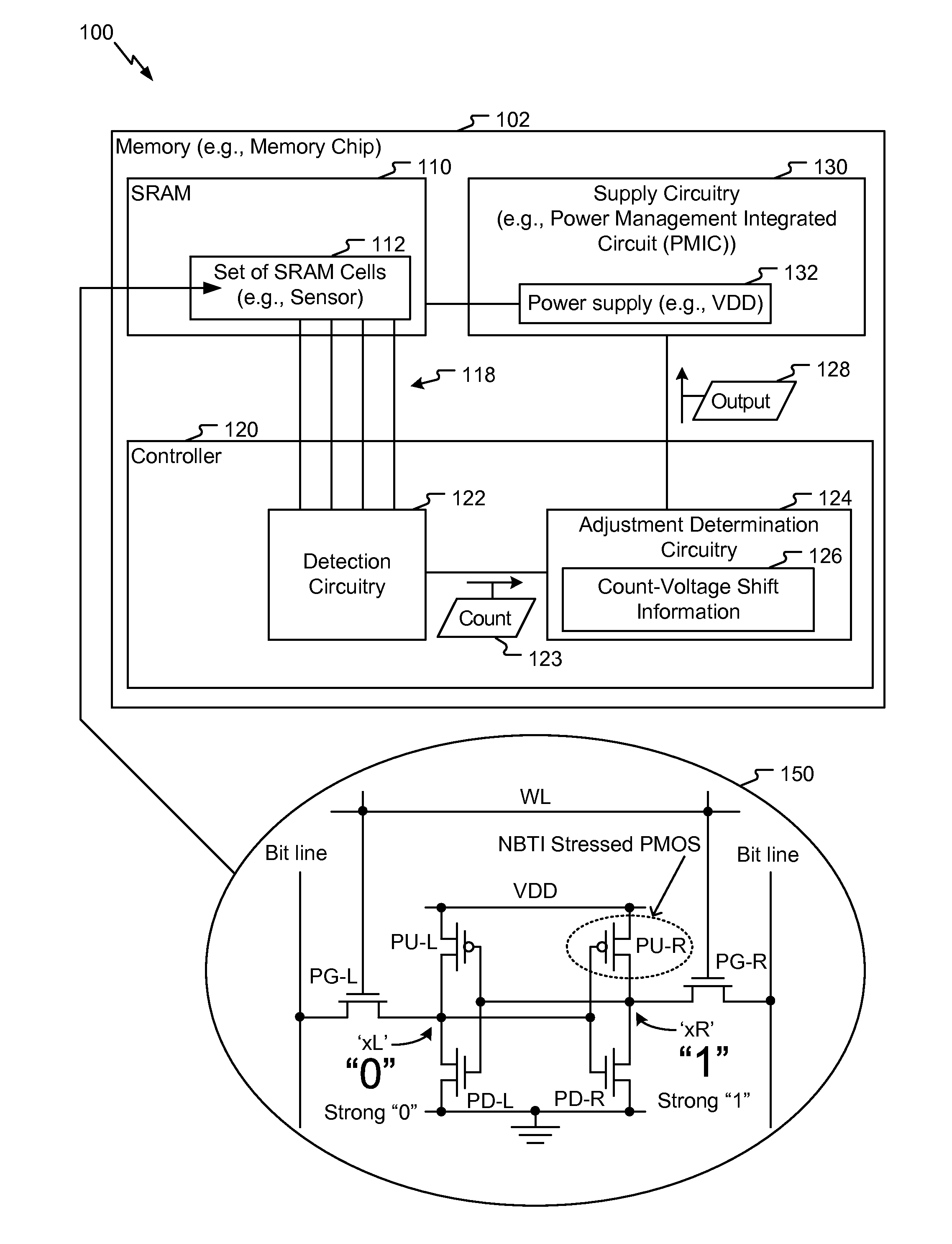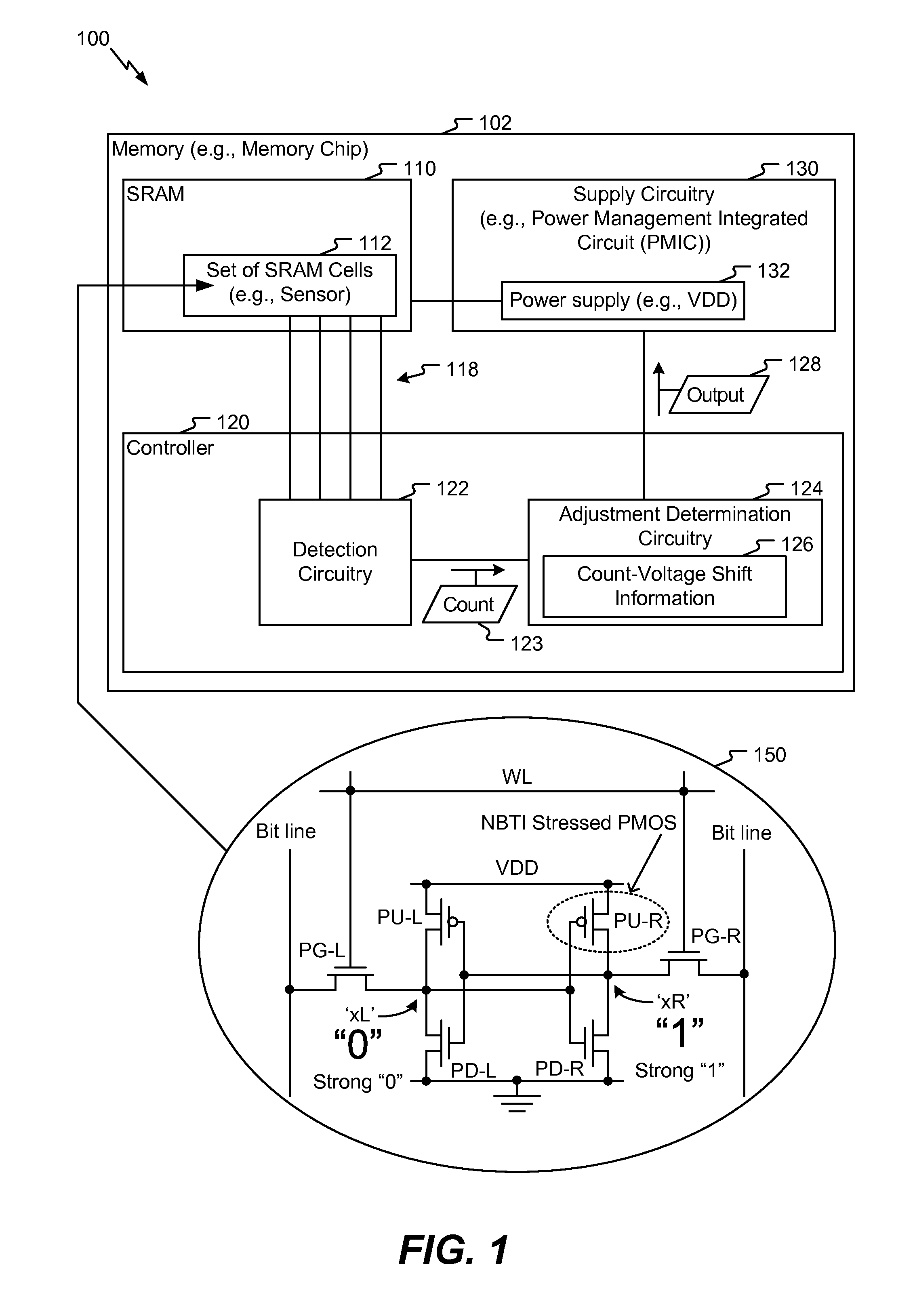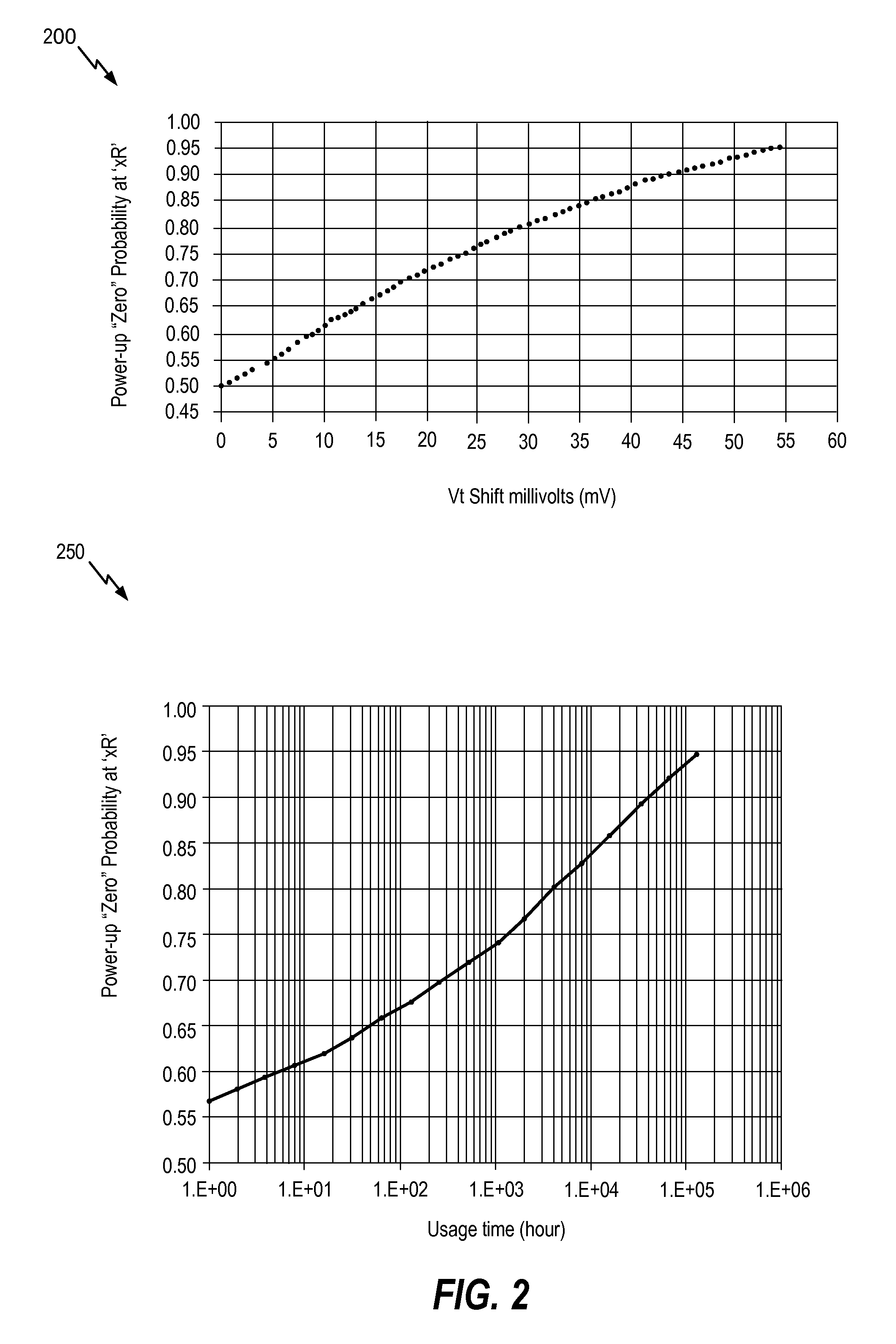Static random-access memory (SRAM) sensor
a random access memory and sensor technology, applied in static storage, information storage, digital storage, etc., can solve the problems of increasing the size, cost and power usage of the sram, the reliability of the sram may degrade during the operational life of the sram, and the degradation of the sram performance and reliability, so as to reduce one or more effects of degradation, reduce voltage and/or noise margins, and reduce the effect of operating margins
- Summary
- Abstract
- Description
- Claims
- Application Information
AI Technical Summary
Benefits of technology
Problems solved by technology
Method used
Image
Examples
Embodiment Construction
[0016]Particular embodiments of the present disclosure are described below with reference to the drawings. In the description, common features are designated by common reference numbers.
[0017]Referring to FIG. 1, a particular illustrative embodiment of a system 100 configured to determine degradation (e.g., aging) associated with operational usage of a static random-access memory (SRAM) is disclosed. The system 100 includes a memory 102, such as a memory chip (e.g., a memory die). The memory 102 may include a static random-access memory (SRAM) array 110, a controller 120, and supply circuitry 130.
[0018]The SRAM 110 may include a plurality of SRAM cells. The cells of the SRAM 110 (e.g., the set of SRAM cells 112) may be substantially uniform. For example, cells that are substantially uniform may be substantially the same size, may have the substantially the same operating characteristics, and / or may be manufactured using a common process. Cells that are substantially the same size ma...
PUM
 Login to View More
Login to View More Abstract
Description
Claims
Application Information
 Login to View More
Login to View More - R&D
- Intellectual Property
- Life Sciences
- Materials
- Tech Scout
- Unparalleled Data Quality
- Higher Quality Content
- 60% Fewer Hallucinations
Browse by: Latest US Patents, China's latest patents, Technical Efficacy Thesaurus, Application Domain, Technology Topic, Popular Technical Reports.
© 2025 PatSnap. All rights reserved.Legal|Privacy policy|Modern Slavery Act Transparency Statement|Sitemap|About US| Contact US: help@patsnap.com



